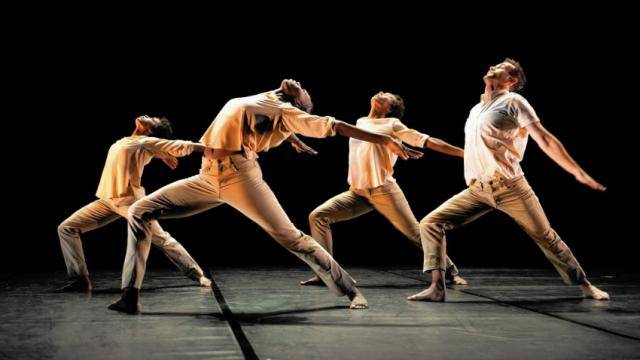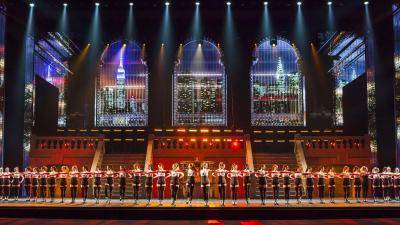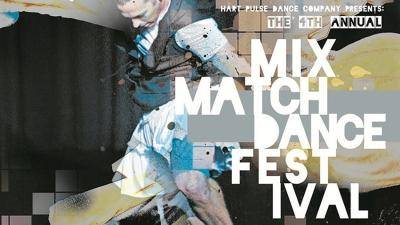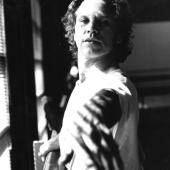Paul Taylor with his newly minted American Modern Dance and Kyle Abraham with Abraham.In.Motion fielded concerts in Los Angeles over the past weekend. Taylor is now the elder statesmen of American dance while Abraham is the new kid on the block. He is also an Americanist though in different ways and for different reasons. Seeing both companies back to back poses basic questions about what dance is for, who the dancers are, and the meaning of the contexts in which we experience dance. Both choreographers have been recognized as MacArthur Fellows.
In two of the Abraham works on the Broad Stage the where was clear. “The Gettin’” and “Absent Matter” (a play on #BLM) both inhabit the racist political landscapes of South Africa and America spelled out in on screen projections. There are his dancers, dancing in front of street fires in Ferguson, apartheid signage in Cape Town, and in another instance, in front of a phone video of six white cops from Staten Island choking to death an asthmatic Eric Garner on the streets of a working class neighborhood---for selling cigarettes. The message here may be if you don’t keep seeing the images, the outrage dies. Neither work is going to change our train wreck of a social landscape but gluing together activism and dance by mixing movement and media makes it clear that they are happening in a real place, and one that has political meaning for us.
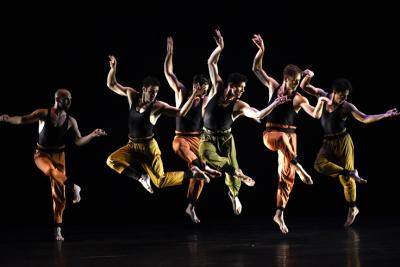
Taylor’s universe is far less concrete. All three works, one from each of the last three decades of the 20th century--Syzygy, The Word, and Esplanade--are works of deep imagination. Their characters are not real people but fantasy actors. The situations are unlikely, even at times perverse. Syzygy, an extraterrestrial spectacular, is an ode to the frantic goings on of space junk, gravity, and turning planets. You might wonder why there are people in it at all. The Word is a biblical essay in brutal, if willing, conformity represented by a group of eleven dancers (both the men and the women look like school boy refugees from Lord of the Flies) and a temptress in a body suit with rouged up breasts. With Taylor, when you’re in, you’re in deep. Esplanade’s dancers feel like characters cutting loose in a Shakespearean green world. There you find a dusting of the romantic, courtliness, sunny high spirits, and a bit of harmless gloom tossed in for good measure. It is an undeniably perfect evocation of the music, two buoyant Bach violin concertos stitched together into a longer five part suite. By the end people are literally sailing through the air. Each of the works has a lone female dancer that plays off the group, one menacingly sexual (The Word), one a female “Puck” (Esplanade), and the third, a passively rotating planet (Syzygy).

Taylor’s dancemaking, at least in these three works, is mostly composed of movement with little pedagogical origin. Syzygy in particular seems made of movement from a hyper-kinetic, proto dance world before there were any rules at all. Each work demands you accompany Taylor down a rabbit hole of sorts. Of the three, Esplanade has the easiest access. Made up exclusively of running, jumping, and walking, it looks like a world to which you could pay a friendly, casual visit. Mr. Abraham is more of a dance omnivore. He draws freely from contemporary, jazz, and street idioms. Both “The Gettin’” and “Absent Matter” have substantial theater dance appeal while the other two works on the program, Grey, an emotional solo for a female dancer (Marcella Lewis) with music from the Etta James songbook, and The Quiet Dance, a Gershwin flavored piano miniature by Bernstein, were driven by the best of contemporary dance idioms and purely musical connections. It was powerful for the way it imagines how an outsider stays an outsider and for the beauty of the design and integration of the dance sections and music. Even without attaching a narrative it was admirable for its structure, mood, and economy of movement. In all of the evening’s choreography Abraham showed us just how effective he can be working in political contexts as well as strictly emotional and personal ones.
And finally, let me acknowledge excellent performances in both concerts, especially the women. They were: Michelle Fleet as Taylor’s run-around-girl in Esplanade, Parisa Khobdeh as the enforcer in The Word, Madeline Ho as the celestial Syzygy girl, and Connie Shiau as the loner in The Quiet Dance.
